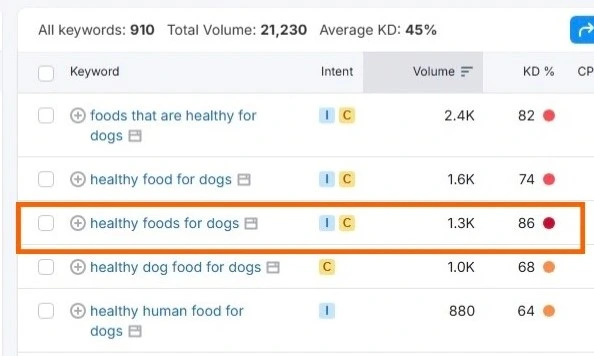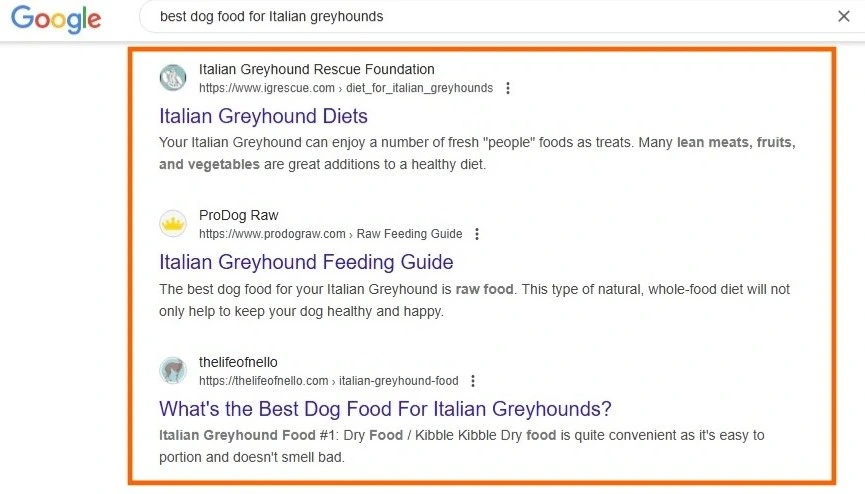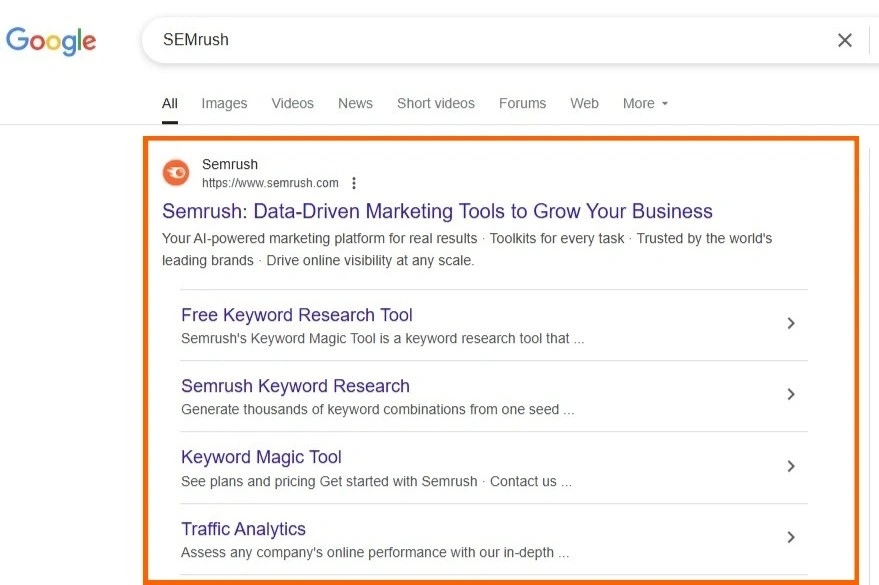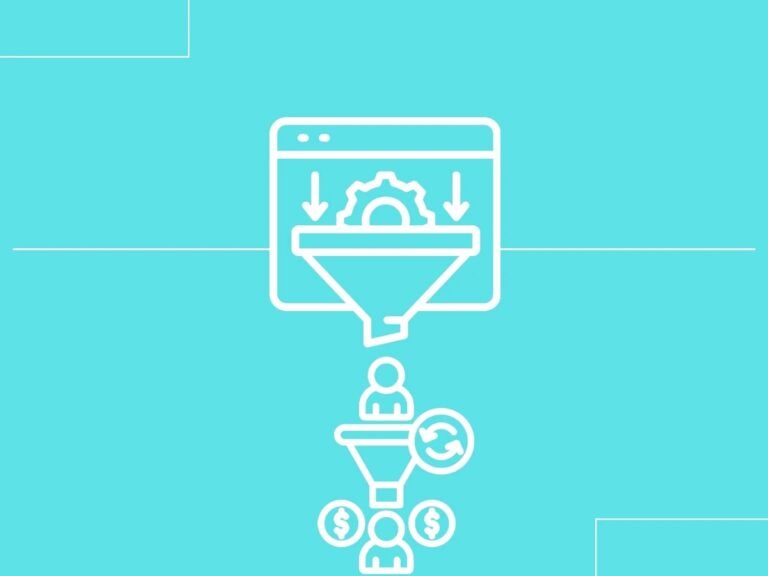
Last updated: June 10, 2025
Solid data-driven SEO strategy adjustments will help you finally put the guesswork to rest. An SEO optimization strategy backed by data is exactly what you need to grow your website the right way.
An SEO strategy without data is like walking around your living room in the dark. You may know your way around the room, but it’s only a matter of time before you trip over a table. This article will light up your space and help you create a strategy that boosts organic traffic and converts everyday readers into paying customers.
For entrepreneurs, data-driven SEO strategy adjustments are the key to long-term growth. It ensures that content creation and distribution are backed by valuable insights. And it aligns your efforts to search intent and conversion goals.
So without further ado, let’s explore the key elements of a strong data-driven SEO strategy!
What is a Data-Driven SEO Strategy?
A data-driven SEO strategy involves using analytics, keyword data, and user behavior insights to create an effective strategy. It’s all about using data to make informed decisions, instead of just winging things or listening to ‘gut instincts’. Your instincts can only take you so far; data can take you all the way.
With a data-driven SEO strategy, your content becomes more intentional and effective. Without one, small business owners typically rely on guesswork. This wastes time and resources. The best SEO strategies are backed by data that helps businesses see what’s working and what isn’t.
Need an SEO strategy that attracts, engages, and converts readers? Then look no further!
Techdella is a data-driven SEO agency that specializes in creating SEO strategies that actually get the job done. Reach out today and we’ll help you boost organic traffic and expose your brand to a wider audience.

How to Create a Data-driven SEO Strategy That Drives Results
It’s one thing to know what a data-driven SEO strategy is and a whole other thing to put it into practice. In this section, you’ll get a step-by-step guide to creating one.
Let’s dive right in:
1. Research high-opportunity keywords
Keyword research is the foundation of any good data-driven SEO strategy. Let’s break down what comprehensive keyword research is all about.
Suppose you own a dog food company and you have a blog on your website. A good keyword for your blog would be something like “healthy foods for dogs”, but I actually wouldn’t recommend that especially if you’re just starting out.
Here’s why:
According to SEMrush, that keyword has a search volume of 1.3K, which means over a thousand people are searching for that every month—great potential traffic for your blog. However, SEMrush data also shows that this phrase has a keyword difficulty of 86%, which shows that the competition for this keyword is high.
 So if you’re a new blog trying to rank for this keyword against brands that have been around for years, it’s highly unlikely that your post will show up higher than theirs.
So if you’re a new blog trying to rank for this keyword against brands that have been around for years, it’s highly unlikely that your post will show up higher than theirs.
But fear not, I’ve got a data-driven SEO strategy to help you build authority. It’s a little something I call “low-hanging fruit keywords”. This refers to keywords with reasonable search volume but very low keyword difficulty.
Take the keyword “best dog food for Italian greyhounds” for example. SEMrush data shows that this keyword has a search volume of 90 and a keyword difficulty of 0%. That’s what I call low-hanging fruit keywords, also known as high-opportunity keywords. They’re perfect for beginner blogs that can’t compete with big blogs just yet. Bonus point: The phrase is super specific, meaning you’re likely to target people who are more interested in making a purchase.
Bonus point: The phrase is super specific, meaning you’re likely to target people who are more interested in making a purchase.
2. Analyze top-ranking pages
After choosing a keyword, the next step is to scope out the competition. Search your keyword on Google and see which articles come up.
Sticking with our dog food blog example, a quick Google search of the keyword, “best dog food for Italian greyhounds” shows that these pages are ranking the highest.
 The next thing you want to do is study the top 3-5 blog posts. Find out what they have in common, find their strengths and weaknesses. Then use this information to write a post that’s better than theirs in every way.
The next thing you want to do is study the top 3-5 blog posts. Find out what they have in common, find their strengths and weaknesses. Then use this information to write a post that’s better than theirs in every way.
Consider this:
- Add new sections
- Go deeper on certain topics
- Include real-world examples
3. Decipher user search intent
User search intent is the reason behind a query. Shifting away from the dog food example—at last—let’s imagine this: You just finished reading an article about making data-driven SEO strategy adjustments (this one), and you’re ready to put what you learned into practice.
A key lesson in the article was how to use SEMrush for keyword research. So you head over to Google and type “SEMrush” in the search bar. Naturally, you would expect the first thing you see to be a link to the SEMrush webpage, and it is.  In this case, your search intent was navigational, meaning you were trying to navigate to a particular website.
In this case, your search intent was navigational, meaning you were trying to navigate to a particular website.
Let’s look at another example. Bringing the dog food analogy back—sorry, not sorry—imagine this: You just bought a dog, a small chihuahua with big black beady eyes, light brown fluffy fur, pointy waterdrop-shaped ears, and—sorry, I got carried away for a second there.
Anyway, it’s your first dog and you don’t know what kind of dog food is best for a chihuahua. So you rush to Google and search “what’s the best food for a chihuahua”. The result you get is a bunch of blog posts educating you on the best dog food for chihuahuas. Here, your search intent was informational. You wanted to get more information about a certain topic.
Here, your search intent was informational. You wanted to get more information about a certain topic.
Now that we’ve covered two out of the four types of search intent. Let’s look at all of them together:
- Navigational: This is when a user wants to find a specific website or brand.
- Informational: This user is looking for answers or to learn something new.
- Commercial: This user is researching products or services before making a decision.
- Transactional: This user is ready to take action, like buying or signing up.
Note: Keyword research tools like SEMrush include the search intent on their dashboards.
Search intent should guide the direction of your blog post. You shouldn’t be targeting an informational keyword with a transactional blog post. For example, the product page on your website is transactional, so if you optimize it with informational keywords, it probably won’t rank.
4. Optimize on-page elements
At this point you’ve chosen a keyword, analyzed the pages that are ranking for that keyword, and deciphered the search intent behind it.
Now, it’s time to write your blog post. This is where most of the magic happens. Take your time to write a post that speaks to the user who will read it. Address their pain points and questions in detail.
And remember, your on-page optimization doesn’t stop with your content. You also need to fine-tune your title tags, meta descriptions, headers, and content structure. Include keywords where necessary but don’t stuff them in there.
5. Check your site speed
Imagine this: Your smartwatch falls into the bathtub, and even though the guy you bought it from swore on his life that it was waterproof, it clearly isn’t because it went dark the second it went into the water.
You get it out of the bathtub and rush to get your phone so you can search “what to do if smartwatch falls in water”—you’re in too much of a hurry to add a question mark.
You open the first article Google shows you and wait, and wait, and wait. Three minutes go by and this website is still loading while your smartwatch drifts in and out of consciousness.
Frustrated, you go back to the SERPs and choose the second article. It’s up in seconds. You follow the instructions and your smartwatch sputters back to life.
Relieved as you may feel, you can’t help shaking your fist at the first website that wasted your time. You almost wish you could get revenge, but don’t worry Google will do it for you.
When you left the website without scrolling, you basically sent a message to Google telling them you didn’t like what you found. And when more people visit that website, spend three minutes waiting for it to load and then bounce when it doesn’t, Google gets that same message several times.
Soon enough, that article won’t be number one anymore.
That, ladies and gentlemen, is the importance of optimizing your site speed.
6. Leverage internal and external link building
An internal link is a link from one page on your website to another page that is also on your website. Linking related pages helps you build topical authority, which simply means it shows Google that you’re an authority on a certain topic.
An external link, or backlink, is a link from another website to your website. Consider it a vote of confidence from this other website to yours. It’s them telling Google, “Hey, this guy’s alright.”
A great data-driven SEO strategy for landing backlinks is guest posting, which is when you write a blog post on another website and add a link to yours. You can find guest posting opportunities by searching: your industry + “write for us”.
7. Monitor your SEO performance
Your data-driven SEO strategy doesn’t end after your first optimization. You have to keep monitoring your performance. Use real-time data to adjust your strategy and make changes where necessary.
Here’s how to keep an eye on things and improve your SEO strategy:
- Check important metrics like bounce rate, keyword rankings, and organic traffic.
- Optimize content with new ideas, examples, and sections.
- Update statistics that are no longer accurate.
Why Small Businesses and Startups Should Care About Data-driven SEO Strategies
Many startups fail at growing their websites because they lack a data-driven SEO strategy. SEO strategies for startups must be rooted in data. To truly see the benefits of your efforts, you’ll need to work smart, not hard. Early-stage businesses typically have limited resources which means it’s important to only invest in what works and abandon what doesn’t.
A data-driven SEO strategy also makes it easier for your startup to compete with bigger brands. By using insights, you can find out the SEO strategies that your competitors are using. With this information, you’ll be able to re-strategize and adjust your content.
Another key benefit is a better return on investment. The ROI on content marketing improves greatly when it’s backed by a smart data-driven SEO strategy. At the end of the day, this is all about making sure your efforts are rewarded and not ignored. When you combine SEO with data, you’re guaranteeing a successful content marketing strategy.
Core Benefits of a Data-driven SEO Strategy
If your SEO isn’t converting, then it might be time to shift to a data-driven SEO strategy. Using one will help you get more value from your content marketing.
Still not convinced? Here are some of the core benefits of data-driven SEO strategies:
- Higher search engine rankings: Research shows that the first result on Google captures 27.6% of all clicks, and less than 1% of users go beyond the first page. This is why improving your ranking is so important.
- Better audience targeting and engagement: Highly specific keywords make targeting a particular audience a lot easier. A keyword like “SEO strategies for series B SaaS startups” is a lot more specific than say “SEO strategies. The former allows for better audience targeting.
- Improved content relevance through real data: Keeping an eye on your data means you can use real-time insights to optimize your strategy.
- Increased conversions from organic traffic: An SEO strategy backed by data helps you boost conversion rate. As Bizzuka CEO, John Munsell puts it “Content is king, but conversion is queen.”
Essential SEO Metrics and KPIs to Track for Success
If your data-driven SEO strategy isn’t tied to clear KPIs, you might not even know what success looks like. Imagine being in a marathon and having no idea where the finish line is. That’s what it’s like to have an SEO strategy and not track important KPIs. You need to focus on metrics and KPIs because they show you what you’re working towards.
A strong data-driven SEO strategy accounts for every aspect of SEO. There are four key types of SEO and each of them has important insights you’ll need to consider. Let’s take a look at them.

On-Page SEO
On-page SEO is an organic SEO strategy that focuses on optimizing your website internally. The work is done directly on your website and it is fully within your control. These are the metrics to track for on-page SEO:
- Organic Traffic: This shows you the number of visitors coming from search engines. High organic traffic is the goal for many startups and small businesses.
- Bounce Rate: This shows the percentage of visitors that leave your website without interacting. A high bounce rate shows that your readers didn’t find what they were looking for on your website.
- CTR (Click-through Rate): This is the percentage of people who click on your link after viewing it.
- Keyword Rankings: This is the position of your target keyword in Search Engine Results Pages (SERPs).
Off-Page SEO
Your SEO optimization strategy isn’t complete without off-page SEO. This data-driven SEO strategy focuses on boosting website traffic and authority through external sources. Here the work is done outside your website but it directly affects ranking and success. You’ll want to track these metrics:
- Backlink Quality and Quantity: In the game of backlinks, quality is always more important than quantity. But it’s still important to consider both. A great way to build links is to first create content worth linking to. In Jason Acidre’s words, “To educate is not just the best way to sell. It’s also the best way to build links.”
- Domain Authority (DA): This metric was created by Moz and it predicts the likelihood of your website ranking high on SERPs.
- Brand Mentions: This refers to any time your brand is mentioned without a direct link to your site.
- Social Signals: This includes metrics such as likes, shares, comments, and other engagement with your posts on social media platforms.

Technical SEO
Technical SEO is key to SEO strategies for startups. It focuses on improving your site’s performance. As your website takes in visitors, you’ll need to ensure you’re providing a good user experience for them. This makes people and search engines happy. Here are the metrics to track for technical SEO:
- Site Speed: This shows you how fast your page loads after someone clicks on it. Let’s say someone clicks your site and it takes 10 minutes to load. Most people won’t even wait 5 minutes, let alone 10. They’d simply go right back to the SERPs and choose another article.
- Crawlability: Website crawlability refers to how well Google is able to index your website pages. You can check this with Google Search Console.
- Mobile-friendliness: Most of your visitors will likely be mobile users so you need to check that your website works well on mobile.
Local SEO
Local SEO helps you target people in specific locations. This data-driven SEO strategy is perfect for people with physical stores because it helps you attract customers in your area to your store. These are the metrics to track for improving local SEO based on data:
-
Insights on Your Google Business Profile: Check insights such as views, clicks, and direction requests regularly. This way you know if people are taking an interest in your business.
-
Reviews from Local Customers: The quality and quantity of reviews you get is something you shouldn’t ignore. If you’re getting tons of bad reviews or no reviews at all, this signifies a problem. Infer what you can from bad reviews—maybe your customers aren’t happy with a certain aspect of your product or they’d like better customer service. Figure out what the problem is and fix it. And if you’re getting no reviews at all, reach out to previous or existing customers and politely request for some.
Reviews act as social proof. They show that real people used your product and liked it. Companies like Hubspot and Slack use them to sway prospects by displaying customer reviews on their websites.
Tools to Power Your Data-Driven SEO Strategy Adjustments
It’s one thing to know what data to track and another to find said data. In this section, we’ll look at the tools you’ll need to find SEO data. Let’s get into it:
Keyword Research Tools: These will help you find relevant, high-opportunity keywords. Tools such as Google Keyword Planner, Ubersuggest, SEMrush, and Ahrefs can help you do that.
Analytics Tools: These tools are the best way to figure out what part of your strategy is working and what you need to work on. Some of the best analytics tools include Google Analytics, Google Search Console, and SEMrush.
Reporting Tools: Turning your SEO data into simple, actionable, and shareable reports is easy when you have the right tool. For this, you can use Looker Studio, SE Ranking, or Moz Pro.
FAQs on Data Driven SEO Strategy
Stop Guessing and Start Implementing
Now that we’ve covered everything you need to know, it’s time to stop guessing and start growing with focused data-driven SEO strategy adjustments. Your website will thank you when you apply insight-backed strategies that drive real growth.
Want help creating SEO content backed by data? Let’s create content your audience can’t resist. Book a call and we’ll make it happen.




